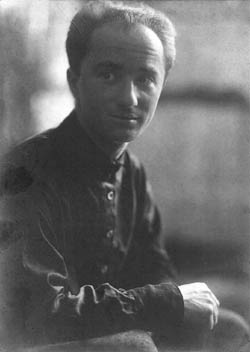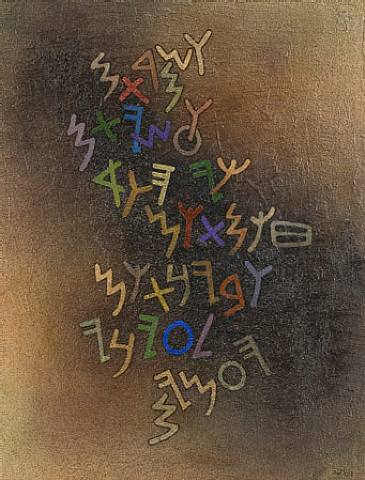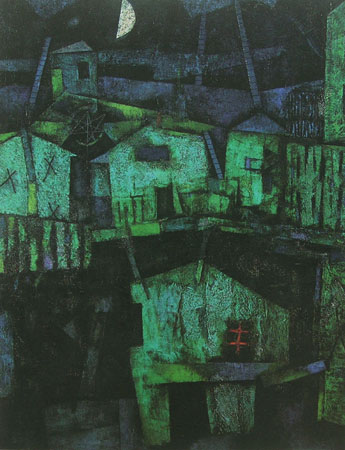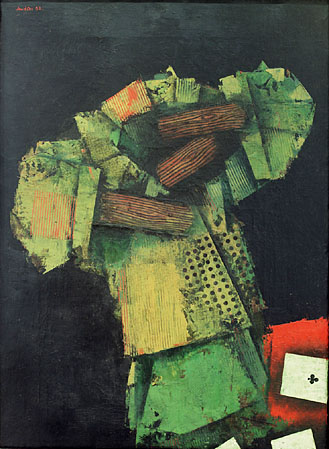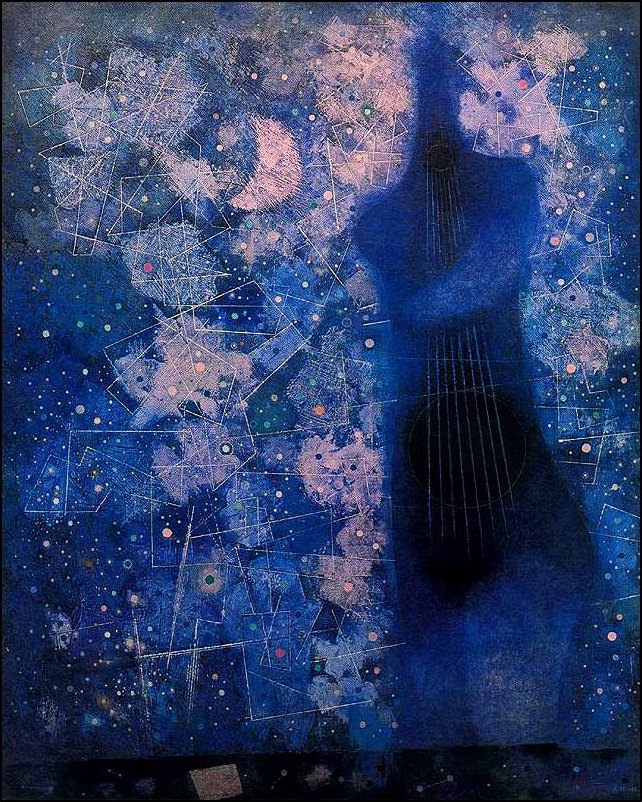| Mordechai Ardon
The Art History Archive - European Art
Israeli AbstractionistBy Brandi Leigh - March 2008. Mordechai Ardon is considered by some to be Israel’s greatest painter. His works were filled with mystical connotations, Jewish symbolism and enigmatic scenery. An artist who chose to use modern, expressionistic and abstract styles, combined with a classic painting technique which created distinctly unique paintings. Born Mordechai Eliezer Bronstein on July 13 of 1896 to Orthodox Jewish parents in Tuchow, Poland. Ardon showed interest in art, and began drawing at a young age. Then in 1919 he traveled to Berlin where he pursued a career in acting; however Ardon quickly realized his true calling was painting, and left the school. From 1921 to 1925 he studied at the Bauhaus – the premier European avant-garde center at the time - under Klee, Kandinsky, Feininger and Itten. After his studies, he returned to Berlin with his wife Miriam. By 1926 he was traveling to Munich to study painting techniques of the Old Masters under Max Doerner at the Munich Academy. Ardon began to exhibit his art with the Berlin November Group in 1928. Then in 1933 he immigrated to Jerusalem, Israel. It was there that he joined the faculty of the New Bezalel Arts and Crafts School in 1935, and found time to paint when he wasn’t working. Five years later he was elected Director of the Bezalel School. Throughout the fifties he lectured at the Hebrew University on art appreciation; and from 1952 to 1963 he became artistic advisor to the Israel Ministry of Education and Culture. It was in 1963 that he finally retired and continued to focus solely on his artwork. During these years, he created eight monumental triptychs as well as one of his most famous creations: The Ardon Windows. The windows were made of beautiful stained glass, displayed at the Jewish National and University Library. Ardon dedicated the windows to Isaiah’s vision of eternal peace which incorporated visual elements from the Kabbalah. Ardon was both an influential artist and teacher over his lifetime and in recognition of his achievements, was awarded the Israel Prize in 1964. Ardon passed away in June of 1992 at his home in Jerusalem, Israel. His works are on display at the Israel Museum, Tate Gallery in London, The Metropolitan Museum of Art in New York, The Stedelijk Museum in Amsterdam and The Tel Aviv Museum of Art.
Artworks by
|
|
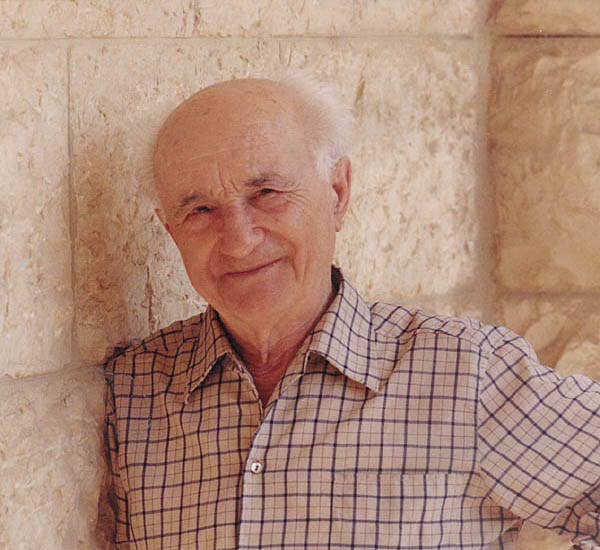
From an Ardon letter to Willem Sandberg, Director of the Stedelijk Museum, dated 15th August 1960: "…Your discussion was extremely interesting and very revealing …Modern Art is striving towards a summit, not yet reached. This trend of Modern Art will continue - notwithstanding all regressive and grumbling elements. There is no doubt about this! "But an odd thing happened on my palette: something foreign sneaked into the group of cadmiums, ultramarines and viridiums - it was Jerusalem - ascetic, with a sack over its head. "What is Jerusalem doing amongst the bright cadmiums? How can one scratch it off the palette? Sometimes it can be scared away and hidden behind the ivory black. But in vain - in the next morning it settles down again in the midst of the cadmiums. "That is the problem! For thousands of years Jerusalem has been thundering against Athens, against the radiant, the Apollonian, the Dionysian Athens. How I admire Athens! How godlike and bright does a Matisse wander about there. His canvas breathes the sweet fragrance of the Mediterranean - morning fragrance is in the air. "At such moments Jerusalem stays far, far away, behind the black. But as soon as Matisse has passed -it comes up again among the cadmium the ultramarine and the viridium. One can not get away from it. The alien Jerusalem always gives orders: "Thou shalt", "Thou shalt not", like a black woodpecker Jerusalem keeps knocking on your bark - Thou, Thou, Thou. Thou and the orphan, Thou and the widow, Thou and the distressed, Thou and the oppressed. Never is one left alone! As if life can only be lived in the Thou and as if being alive could only manifest itself in conjunction with the Thou. "That is the problem. The 'Thou' does not play any part in modern art. Artists are suns revolving on their own axes, surrounded by a wealth of moons with their faces turned towards them…"
| |
